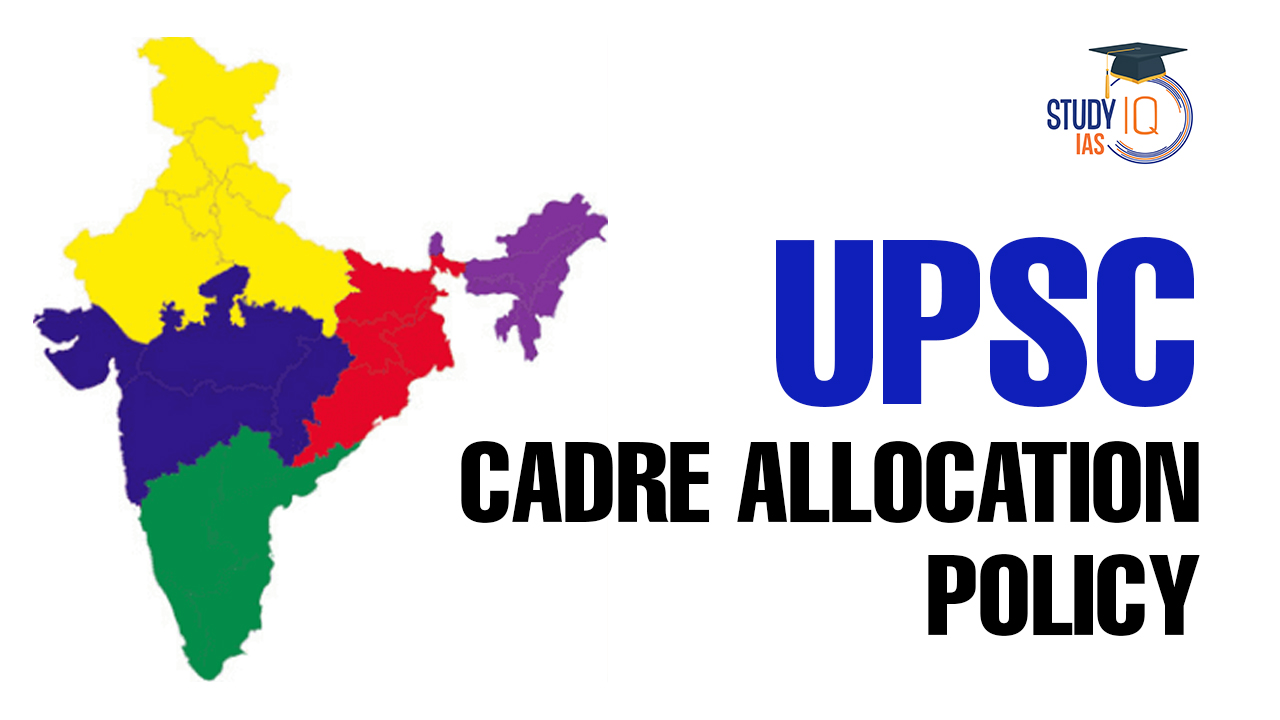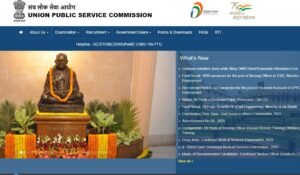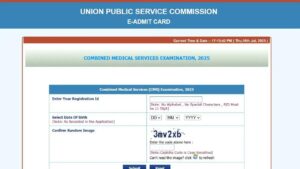Table of Contents
The Central Government of India, in consultation with state governments, revised the cadre allocation policy for All-India Services like IAS, IPS, IFoS, etc in 2017. Candidates preparing for the UPSC Civil Services examination can go through this article to learn about the UPSC Cadre Allocation Policy.
Department of Personnel and Training (DoPT) is the nodal department for allotment of cadre. Candidates are requested to visit the DoPT website (https://dopt.gov.in or the CSE Information Central at https://cseplus.nic.in) from time to time for the latest instructions and guidance in respect of service and cadre allotment.
UPSC Cadre Allocation Policy
An officer of an All-India Service, like as IAS or IPS, may be posted to a state (or group of states or union territories), which is referred to as a “cadre.” AGMUT cadre, UP, Bihar, Kerala cadre are a few examples. The present UPSC Cadre Allocation Policy differs dramatically from the previous cadre distribution policy in terms of how UPSC cadres are categorised, how IAS applicants indicate their preferred cadre for the IAS exam, and how insider and outsider vacancies are filled.
Check Here: UPSC CSE Final Result 2024
What is Cadre?
In the UPSC Civil Services, a cadre is a state or group of states or union territories where an officer from an All India Service (AIS) is allocated for their service. The AIS includes services like IAS, IPS, and IFoS. The cadre allocation process assigns a cadre to selected UPSC candidates.
The process is based on the candidate’s merit rank, preference, and number of vacancies. The Indian government maintains a 2:1 ratio of outsider-to-insider IAS officers in each state. In very few cases, an IAS officer is assigned to their home state.
Aims of Cadre Allocation Policy
The new UPSC Cadre Allocation Policy is designed to achieve three primary objectives set forth by the Government of India and the State Governments:
- Enhancing national integration.
- Rationalising vacancies based on IAS cadre strength.
- Improving administrative efficiency by reallocating officers from states with surplus personnel to those with deficits.
UPSC Cadre Allocation: Five Zones
According to the revised Cadre Allocation Policy, 2017, the existing 26 cadres of the Indian Administrative Service (IAS), Indian Police Service (IPS), and Indian Forest Service (IFoS) have been grouped into five zones. The Zones are:
| Zone | States Included |
|---|---|
| Zone-I | AGMUT, Jammu and Kashmir, Himachal Pradesh, Uttarakhand, Punjab, Rajasthan, Haryana |
| Zone-II | Uttar Pradesh, Bihar, Jharkhand, Odisha |
| Zone-III | Gujarat, Maharashtra, Madhya Pradesh, Chhattisgarh |
| Zone-IV | West Bengal, Sikkim, Assam-Meghalaya, Manipur, Tripura |
| Zone-V | Telangana, Andhra Pradesh, Karnataka, Tamil Nadu, Kerala |
Candidates must indicate their preferences in DAF by selecting one cadre from each zone in order of priority. This approach aims to promote national integration by encouraging officers to serve outside their home Cadre/states.
UPSC Cadre Allocation Process
The UPSC Cadre Allocation Process is a crucial step in the journey of aspirants aiming to join the prestigious All India Services, including the Indian Administrative Service (IAS), Indian Police Service (IPS), and Indian Forest Service (IFoS). The allocation process determines the cadre, or the region of service, where successful candidates will serve throughout their career, barring any central government deputation.
Key Components of the UPSC Cadre Allocation Process
- Cadre Preference Submission: Candidates prioritise cadres based on preference, considering factors like rank and available vacancies.
- Zone-wise Allocation: Cadres are grouped into five zones, allowing candidates to choose one cadre from each zone as their first preference, ensuring equitable distribution of officers across regions.
- Merit and Preference-based Allocation: Allocation primarily depends on candidates’ merit and preferences. Failure to prioritise the home cadre within the relevant zone may result in missing out on serving in one’s home state.
- Reserved Category Allocation: Reserved category candidates may be allocated against unreserved vacancies based on merit and preference. If not feasible, they’ll be considered for allocation in their category.
- Policy Implementation: The 2024 policy supersedes the 2017 framework and applies to the Civil Services and Indian Forest Service Examinations, aiming for better national integration and administrative efficiency.
Procedural Updates for 2025 UPSC Cadre Allocation Policy
Early Submission of Cadre Preferences
From the 2025 examination cycle onwards, candidates must submit their cadre preferences within 10 days of the Preliminary Examination results. Earlier, this was done after the Mains results. This new practice will help standardise the allotment process and avoid delays.
No Change Permitted After Submission
The candidates, after submitting, cannot change their service or cadre preferences. It is essential, then, for aspirants to weigh carefully their options before making them.
UPSC Cadre Allocation for IAS and IPS
The Cadre allocation policy for IAS and IPS has been mentioned below:
- The candidates will initially list their top three choices from each Zone in descending order of preference.
- The candidates will next choose one cadre from each chosen zone.
- Following that, the candidates will state their second-ranked preference for each desired zone.
- Similar steps will be taken until the candidate expresses a preference for each cadre.
- It should be emphasised that the sequence of choice for the zones will not change, and that the zones and cadres will continue to be preferred in the same order.
- It shall be assumed that a candidate has no preference for any of the Zones or Cadres if he expresses no preference at all.
- A candidate from a reserved category who is chosen based on general merit standards may be matched with an open, unreserved position based on merit and preference. He will, however, be considered for allocation based on his merit and preference against the open vacancy in his category if he is not eligible for such a position because of his lower rank in comparison to other general category candidates.
- With the 2017 Civil Services Examination and 2017 Indian Forest Service Examination, this cadre allocation policy will replace the previous cadre allocation policy.
How to Choose a Cadre?
The preference procedure operates in the manner described below:
- One must choose their preferred zone.
- The following step is to select your preferred cadre.
- Additionally, the procedure must be done for each Zone.
- Cadre according to preference. Additionally, one can only select one cadre at a time.
- Candidates who fail to indicate their preferred cadre will be deemed to have no preference, and the authorities will be free to assign both positions by that assumption.
- Candidates for the quota who are physically impaired have an additional choice of preferences.
As a last point, it is significant to remember that the cadre allocation for public officials occurs at LBSNAA before the foundation course.
Home Cadre Allocation
An IAS officer’s home state is their home cadre. The ratio of outsiders to insiders among IAS officers in each Indian State is maintained at 2:1 by the Indian Government. As a result, an IAS official is only seldom assigned to his or her native State.
Candidates typically never receive their home State. Fewer situations exist where an officer can change his cadre. According to the new UPSC Cadre Allocation Policy, 2017, candidates for the IAS, IPS, or IFoS Services may select any cadre from the five UPSC cadre zones under their preferences.
Impact of New Cadre Allocation Policy
The major impact of this policy shift is the potential for candidates to be allocated to cadres distant from their home state. Previously, there was a higher probability of officers being posted in neighbouring states. However, with this new policy, the government aims to promote better national integration by dispersing administrative resources across the country more evenly.
IAS Cadre Wise List
The IAS cadre-wise list is the posting of IAS officers to various states or Union Territories following the exam. Such a list can be accessed on official portals and viewed in the UPSC result notification or the All India Rank (AIR) list for the Civil Services Examination.
AGMUT Cadre
AGMUT (Arunachal Pradesh, Goa, Mizoram, and Union Territories) is a special cadre that is assigned to officers who are chosen to be posted to these areas, including the Union Territories of Delhi, Puducherry, Andaman and Nicobar Islands, and Lakshadweep. AGMUT is a special cadre for those areas that have special administrative requirements because of their geographical and political situation.
New Changes in the 2025 UPSC Cadre Allocation
From 2025 UPSC Civil Services Examination onwards, the procedure for cadre preference submission is altered. The candidates will now be required to submit their preferences within 10 days of the Preliminary Examination result, a step to streamline and speed up the process of allocation. Change in preferences will not be permitted once submitted.


 UPSC ESIC Nursing Officer Final Result 2...
UPSC ESIC Nursing Officer Final Result 2...
 UPSC CMS Admit Card 2025 Out: Download L...
UPSC CMS Admit Card 2025 Out: Download L...
 UPSC Study Material for Prelims & Ma...
UPSC Study Material for Prelims & Ma...





















